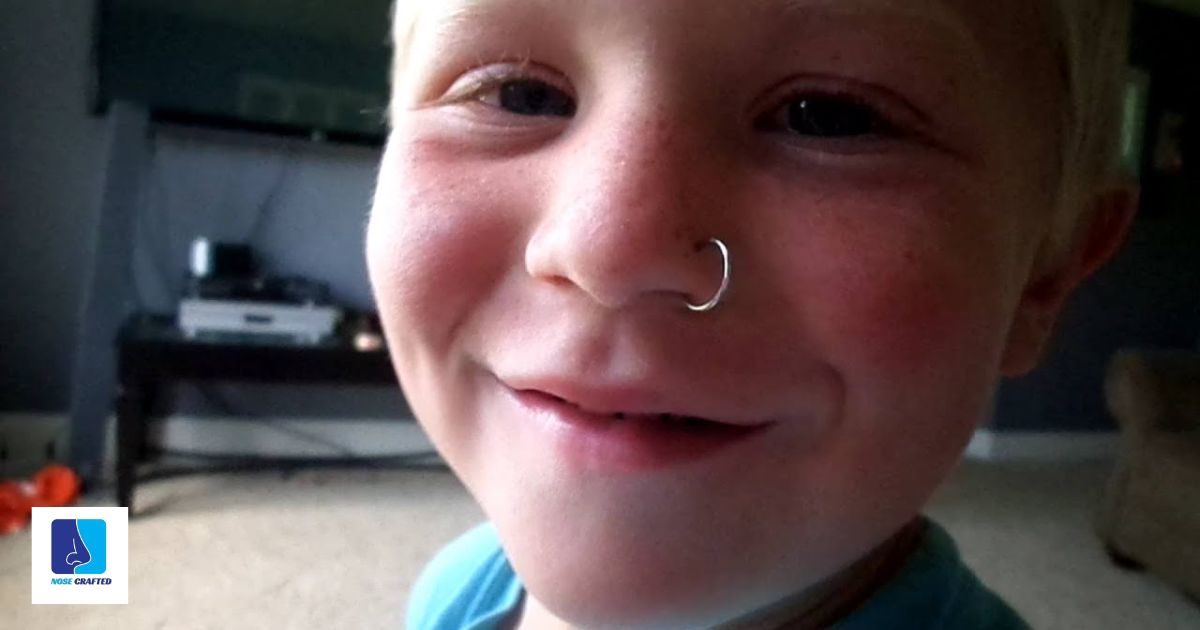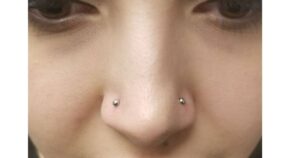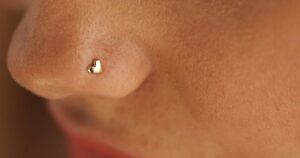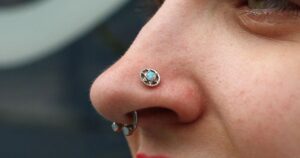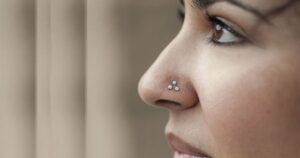Nose piercing is a form of body modification where a small hole is made through the skin or cartilage of the nose. It’s often adorned with jewelry such as studs, rings, or hoops. This practice has cultural significance in various societies and can be traced back thousands of years. Today, nose piercing is a common fashion statement and personal expression choice for many people worldwide.
Are you pondering what age is suitable for your child to get a nose piercing? Wonder no more! Deciding on this significant milestone involves various factors, from cultural norms to personal readiness. Let’s explore together and make an informed decision that ensures both safety and satisfaction for your child.
Determining the appropriate age for your child to get a nose piercing is a personal decision influenced by factors such as cultural norms, maturity level, and individual readiness. It’s essential to consider their ability to care for the piercing and their understanding of the process and potential risks involved. Always consult with your child and consider their desires and your family’s values before making a decision.
When Should a Child Be Allowed to Get a Nose Piercing?
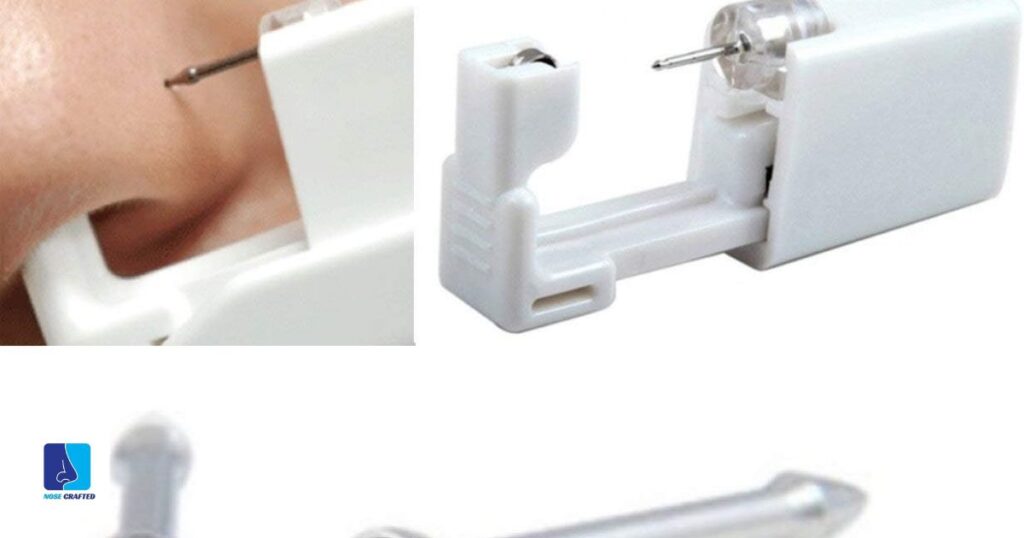
Deciding when to allow a child to get a nose piercing is a significant decision for any parent or guardian. While there’s no universal age limit, it’s crucial to consider various factors. Firstly, maturity plays a vital role; a child should be emotionally and mentally prepared to understand the responsibility of caring for a piercing.
It’s essential to ensure that the child is well-informed about the piercing process and associated risks. They should understand the importance of proper aftercare to prevent infection and complications. Parents should also consider the child’s lifestyle and activities; for example, if they participate in sports or activities where a piercing could pose a safety risk, it might be wise to delay the decision.
Things to Consider Before Letting Your Child Get a Nose Piercing
Before allowing your child to get a nose piercing, there are several important factors to consider. Firstly, assess their maturity level and ability to understand the responsibility of caring for a piercing. Ensure they comprehend the process, potential risks, and aftercare requirements involved. Additionally, consider cultural and familial perspectives on body modifications, as these may influence your decision.
Furthermore, research reputable piercing studios and professionals in your area to ensure a safe and hygienic experience. Verify that the studio follows proper sterilization procedures and uses high-quality piercing materials. Discuss any medical conditions or allergies your child may have with the piercer to prevent complications. Taking these considerations into account will help ensure a positive and informed decision regarding your child’s nose piercing.
1. Nose Piercings Hurt
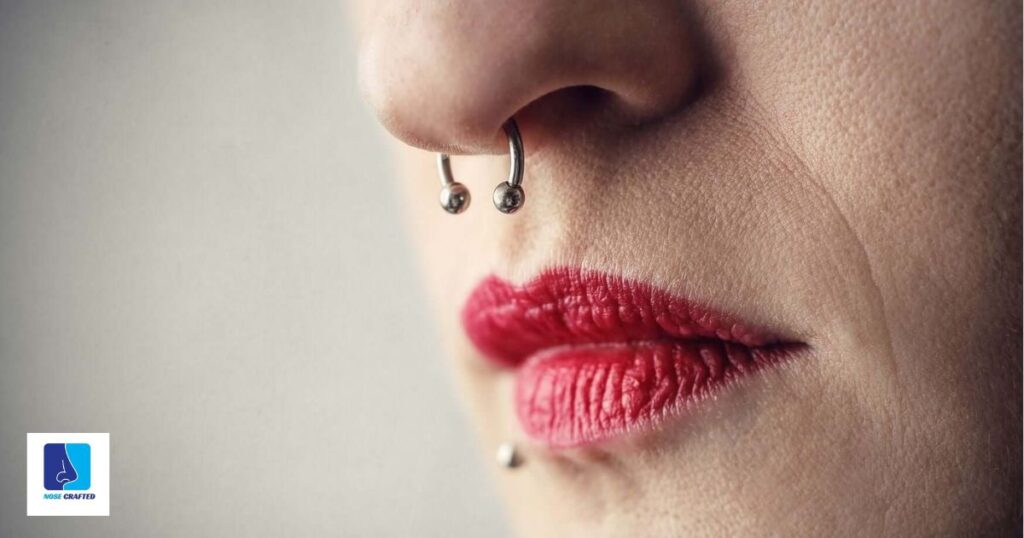
Nose piercings can be uncomfortable, but the level of pain varies from person to person. During the piercing process, you may feel a quick pinch or pressure as the needle passes through the skin or cartilage. However, many people describe the pain as tolerable and fleeting, lasting only for a few seconds. Afterward, there may be some soreness or tenderness in the pierced area, which typically subsides within a few days as the piercing heals.
It’s essential to remember that pain tolerance differs among individuals, so what feels uncomfortable for one person might not be as bothersome for another. Proper aftercare, such as cleaning the piercing regularly and avoiding irritation, can help minimize discomfort and promote healing. If you’re considering getting a nose piercing but are concerned about pain, discussing your worries with a professional piercer can provide reassurance and guidance on managing any discomfort.
2. Piercings Can be Permanent

1. Nose piercings, like any other body piercing, involve creating a hole through the skin or cartilage.
2. Depending on the location and type of piercing, some nose piercings have the potential to be permanent.
3. Cartilage piercings, such as septum or helix piercings, are less likely to close completely compared to piercings in soft tissue.
4. The longer a piercing remains in place, the more likely it is to become permanent due to the formation of scar tissue.
5. Scar tissue can strengthen over time, making it more challenging for the hole to close fully.
6. Even if a nose piercing is removed, a visible scar or indentation may remain, particularly in cartilage piercings.
7. Factors such as the individual’s skin type, healing ability, and the size of the piercing hole influence the permanence of a nose piercing.
8. It’s important to consider the potential permanence of a nose piercing before getting pierced, as removing it may not always result in complete closure of the hole.
3. There’s Some Care and Upkeep

Caring for a nose piercing requires diligence and proper upkeep to ensure it heals well and remains infection-free. After getting pierced, it’s crucial to clean the area regularly with a saline solution to prevent bacteria buildup. Avoid touching the piercing with dirty hands to minimize the risk of infection. Additionally, be mindful of any signs of irritation or infection, such as redness, swelling, or discharge, and seek medical attention if necessary.
Furthermore, proper care extends beyond the initial healing period. Regularly changing the piercing jewelry can help prevent irritation and promote healing. It’s essential to keep the piercing clean even after it has fully healed to maintain its appearance and reduce the risk of complications. Following these simple care tips will help ensure your nose piercing stays healthy and looks great for years to come, especially when considering nose piercing after 4 weeks.
Key Takeaways
Key takeaways from considering the age for your child to get a nose piercing include understanding cultural influences, assessing your child’s maturity, and considering their ability to care for the piercing. Cultural norms may vary widely, so it’s essential to weigh these influences against your family’s values and beliefs. Additionally, engaging in open communication with your child about their desires and ensuring they comprehend the responsibilities and risks involved is crucial before making any decisions.
FAQ,s
Is it OK for a 14-year-old to get a nose piercing?
The appropriateness of a 14-year-old getting a nose piercing depends on factors such as cultural norms, parental consent, and the individual’s readiness.
Is it OK for a 13-year-old to get a nose piercing?
The appropriateness of a 13-year-old getting a nose piercing depends on factors such as parental consent, cultural norms, and the child’s maturity level.
What age is appropriate for a nose piercing?
The appropriate age for a nose piercing varies depending on cultural norms, individual maturity, and readiness, but it’s generally advisable to wait until the mid to late teens.
Are nose piercings allowed at school?
Whether nose piercings are allowed at school depends on the specific policies and regulations of each educational institution.
Conclusion
Nose piercing is a personal choice that can be influenced by cultural, societal, and individual factors. Whether considering it for oneself or for a child, it’s essential to weigh the decision carefully, taking into account aspects such as readiness, cultural norms, and personal values. Communication and understanding between parents and children are crucial in navigating this decision-making process.
Ultimately, the decision to get a nose piercing should be made thoughtfully, ensuring that the individual is fully informed about the process, risks, and responsibilities involved. While it can be a form of self-expression and cultural tradition for many, it’s essential to respect varying perspectives and make choices that align with one’s values and circumstances.
